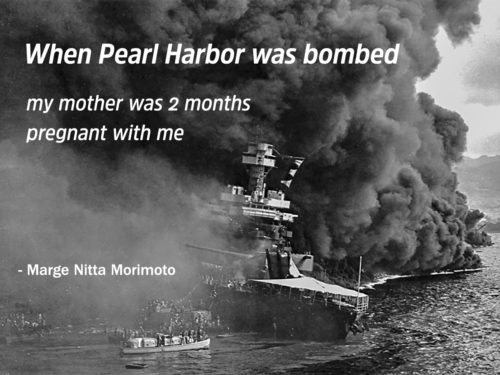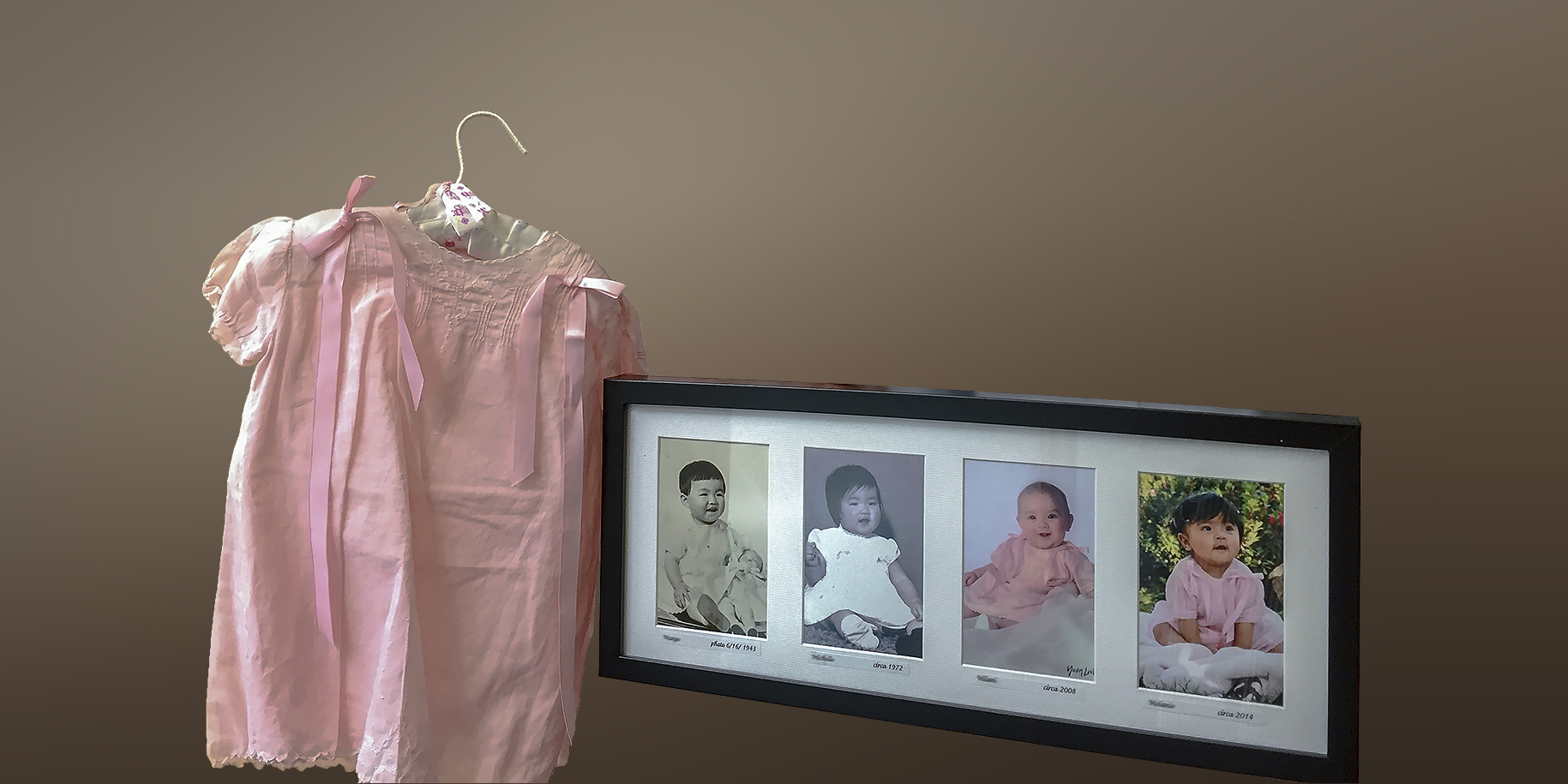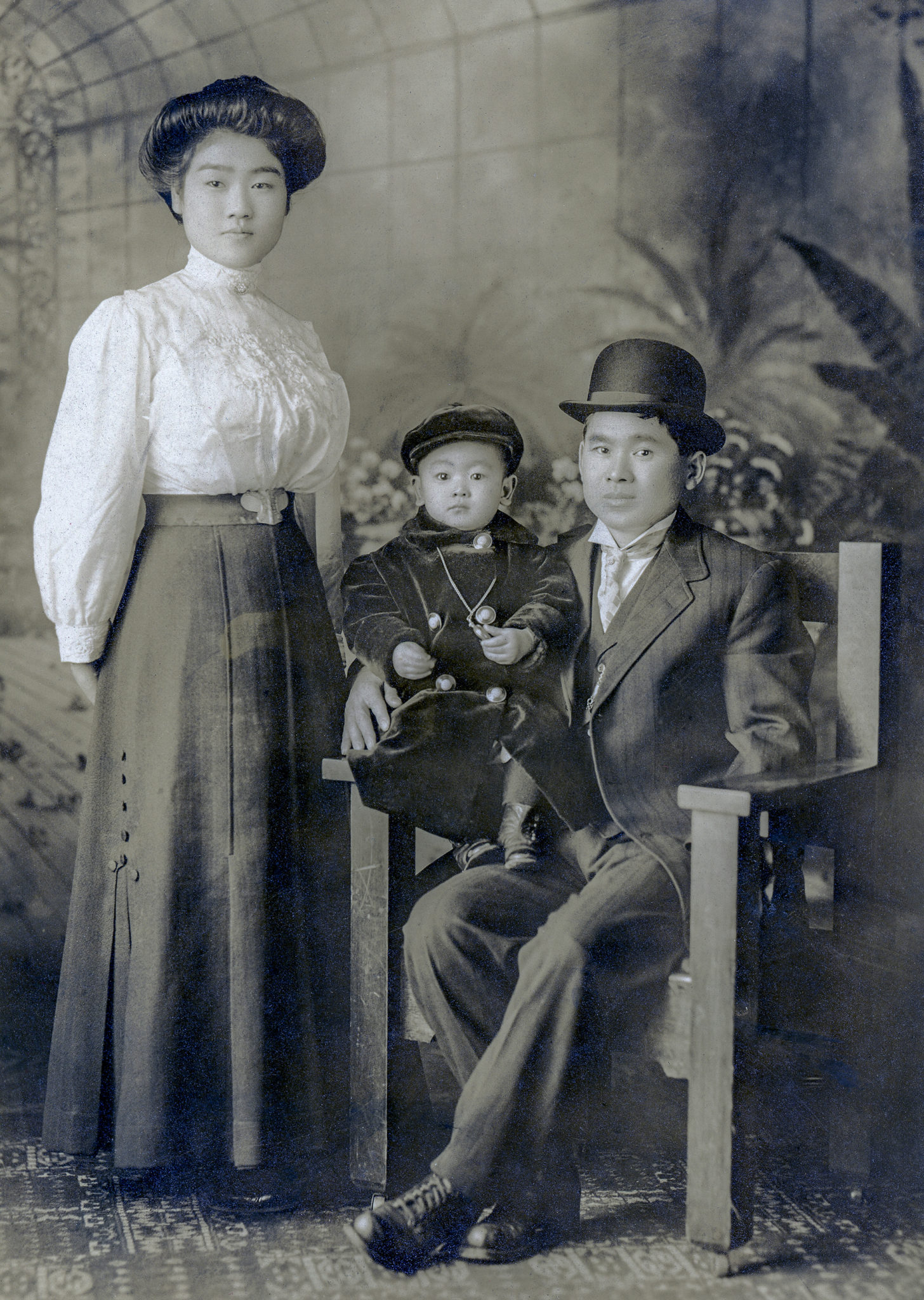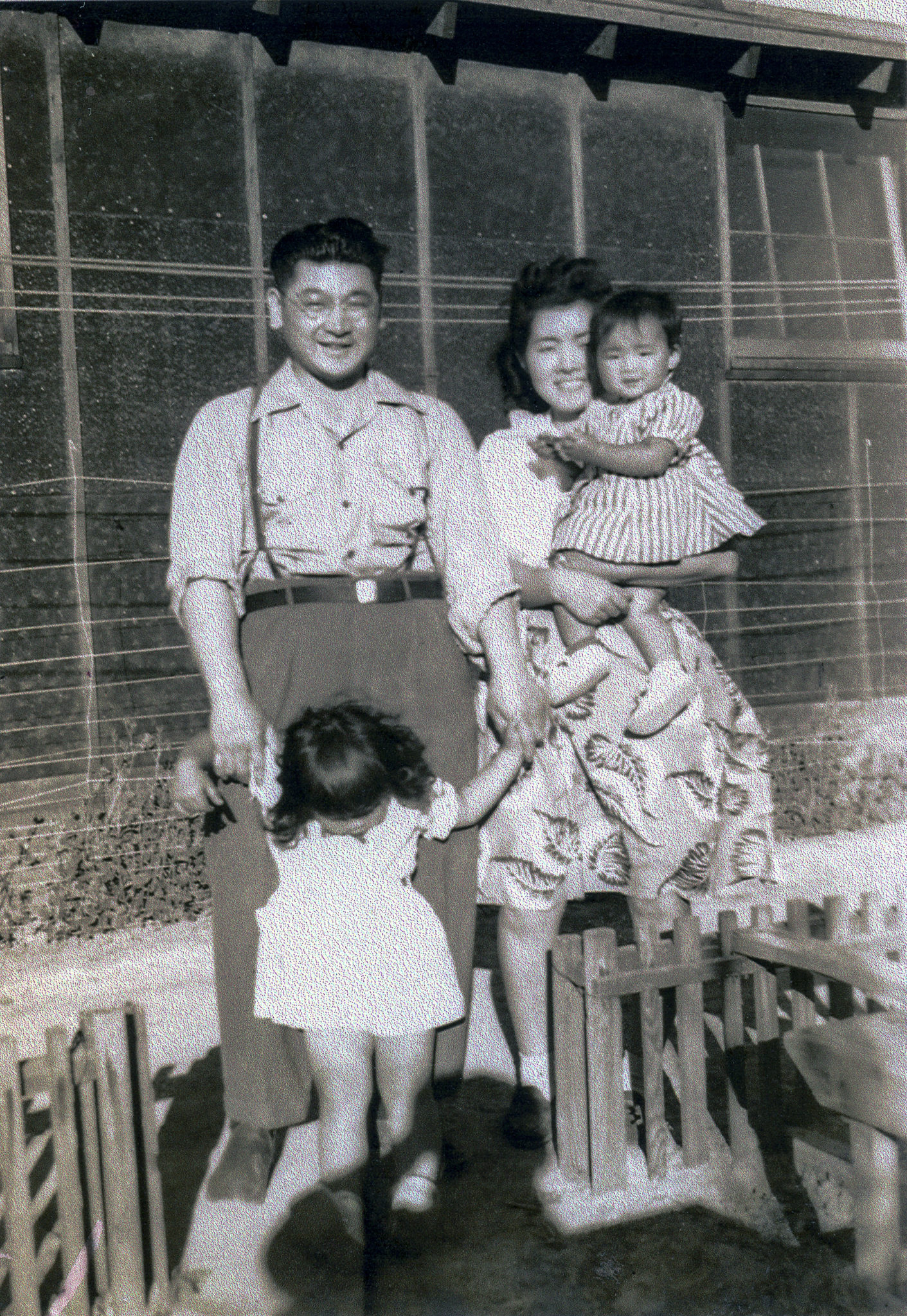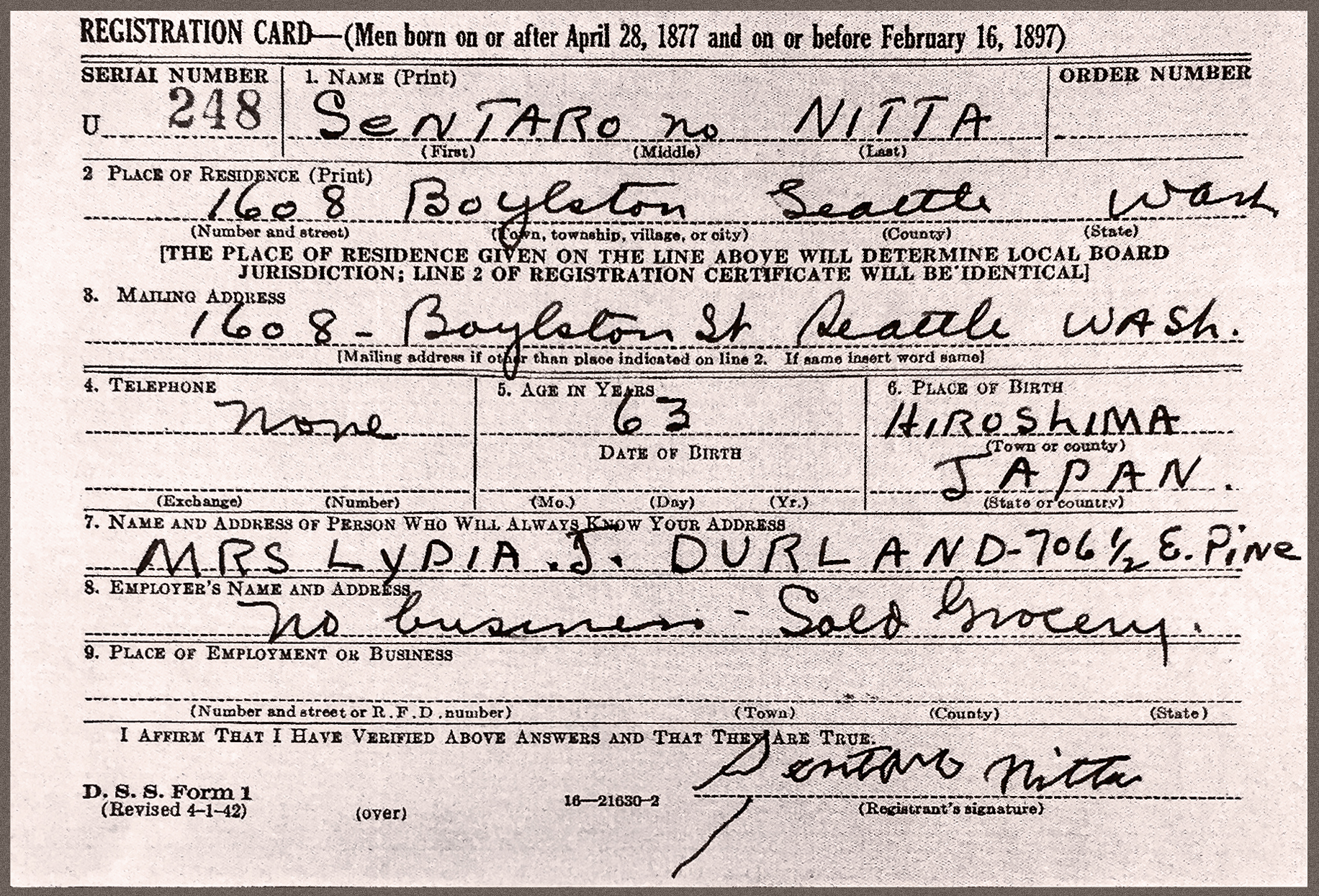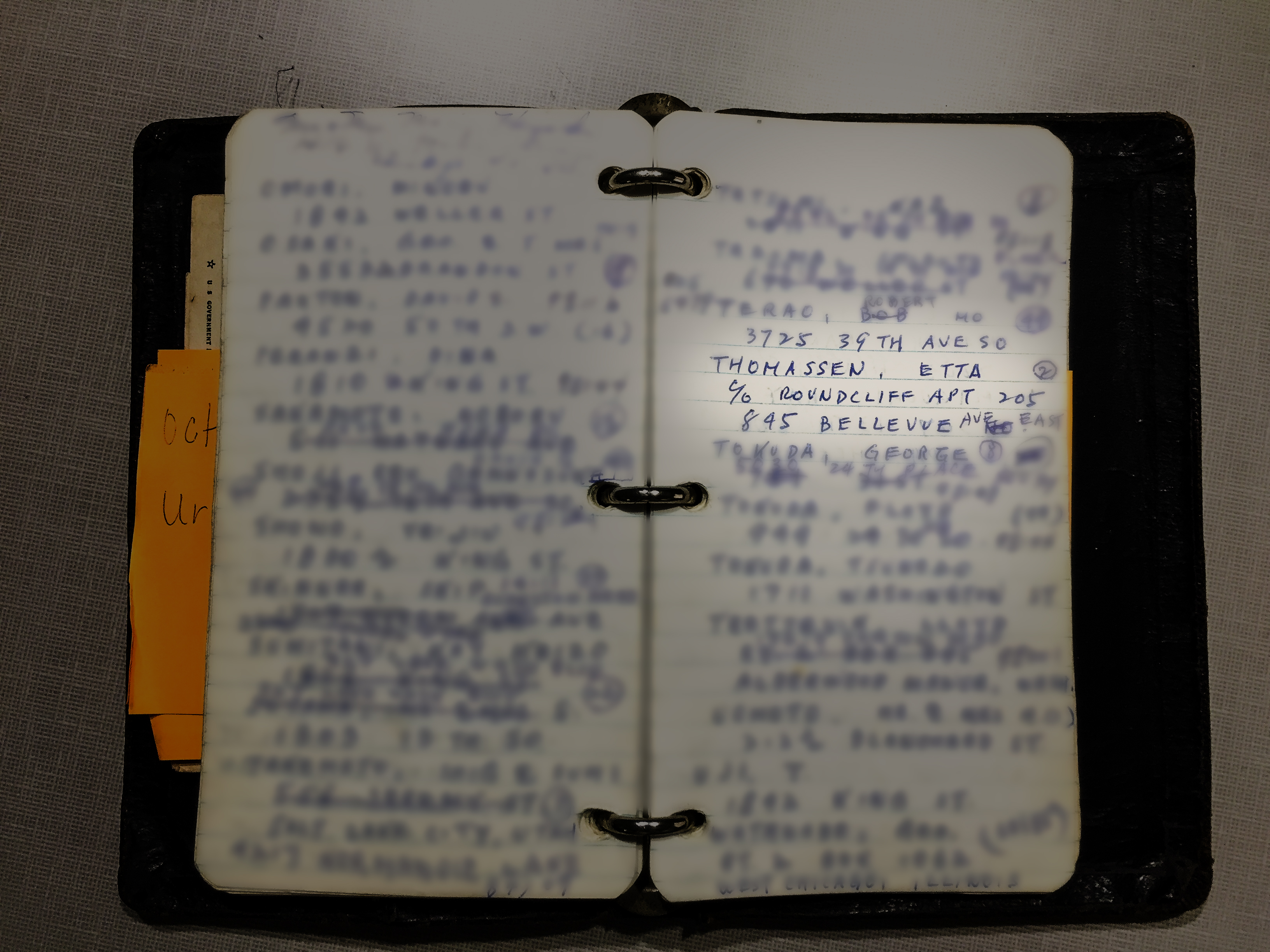![]() My grandfather emigrated from Japan to Hawaii and California before settling in Seattle. My grandmother was a picture bride who bore three sons. Before the war, my parents and grandparents owned a grocery store in Seattle. They sold fresh vegetables and my grandfather was the butcher. When Pearl Harbor was bombed, my mother was two months pregnant with me. My dad had to sell the store, including all the food and equipment, for $600.
My grandfather emigrated from Japan to Hawaii and California before settling in Seattle. My grandmother was a picture bride who bore three sons. Before the war, my parents and grandparents owned a grocery store in Seattle. They sold fresh vegetables and my grandfather was the butcher. When Pearl Harbor was bombed, my mother was two months pregnant with me. My dad had to sell the store, including all the food and equipment, for $600.
In May of 1942, we were evacuated to the Puyallup Fairgrounds “assembly center,” euphemistically called Camp Harmony. I was born at the Puyallup hospital two months later and assigned the number 16639G. When my dad came to visit my mom and me, he was accompanied by a guard.

In August, when I was about a month old, we boarded the train to the Minidoka detention camp in Idaho. It was there that Mrs. Etta Thomassen, a loyal Caucasian customer and neighbor of my family’s store, sent this pink dress. It is handmade from cotton batiste and has a matching slip.
Since cameras weren’t allowed in camp, my parents obtained a pass to leave camp to visit a photographer and have my photo taken in the pink dress. The photo is my only baby picture.
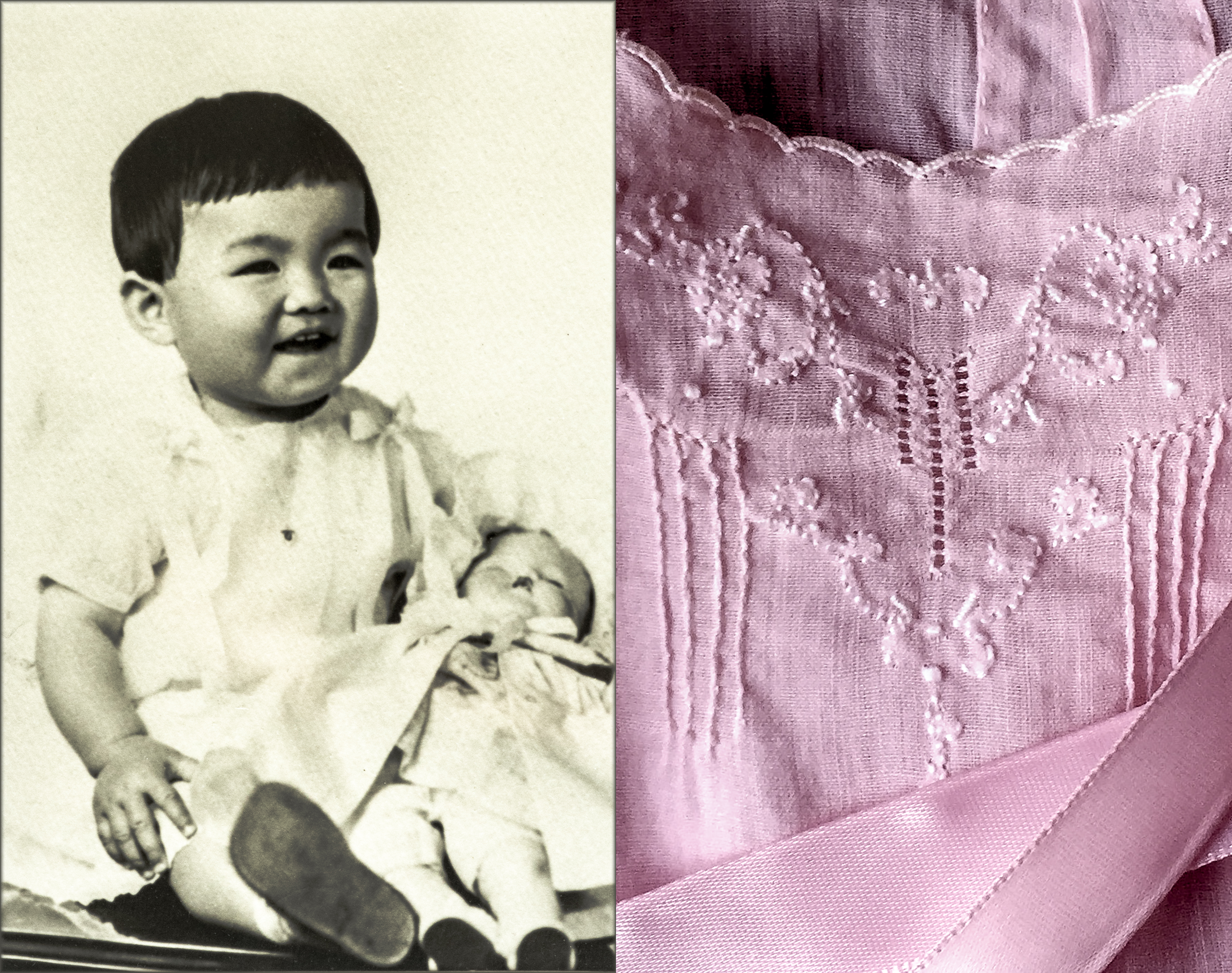
When our daughter was born in 1971, I remembered the pink dress that I had stored in my hope chest. When she was the same age that I was in my baby photo, I had her photographed. When our granddaughters were born, I did the same. The only adjustment I made was the ribbons, which were changed due to rust stains.

This 76-year-old dress is a wonderful reminder of how a long-time, loyal customer remembered the kindness and generosity of my parents and grandparents. I’m sure my family greatly appreciated such an extravagant gift. They must have felt abandoned, being incarcerated in such harsh and primitive conditions. Many decades later, I found Etta Thomassen’s name and address in my parents’ Christmas card list for 1953.
I hope any future great-granddaughters will also be photographed in this dress. Kindness and a thoughtful gesture can last generations.
A Family Album
Family photo c 1913 at Barneston, Washington, near Seattle. From left: Marge’s grandmother Sami, father Masaru and grandfather Sentaro.
Family photo in front of their tar-papered barrack at Minidoka, c 1945. From left: Masaru and Marge, May and sister Linda.
In front of the Nitta garden wall at Minidoka. Grandfather Sentaro made a stone wall using volcanic rock boulders that he hauled to the barrack with assistance from his sons, Masaru and Susumu. The stones were arranged in a circular shape to make a picnic area. Friends came to view the flowers and use fire pits that Sentaro had built. He also created a mini-zoo by capturing wild animals such as porcupines, snakes and jack rabbits.
From left: Susumu, Linda, Sentaro, Sami, Marge, Masaru and May.
World War II Draft Registration card in 1942 for Sentaro. He was 63 years old and ineligible to become a citizen. But he was eligible to fight in a war? The Selective Service Training and Service Act of 1940 required all men aged 18-65 to register.
In the line for occupation, Sentaro’s answer was: “no business – sold grocery.”
Credits
by Marge Nitta Morimoto
project direction: Nancy Ukai
art direction: David Izu
Cover Images: David Izu, Nancy Ukai, Francis Stewart (Minidoka Dec. 10, 1942), baby photos courtesy of Marge Nitta Morimoto
Unless otherwise noted all images courtesy of Marge and Aki Morimoto
Special thanks to:
Marge Nitta Morimoto, Aki Morimoto, J-Sei, Jill Shiraki, Satsuki Ina, James Russell
Supported in part by The National Park Service
Japanese American Confinement Sites grant program

